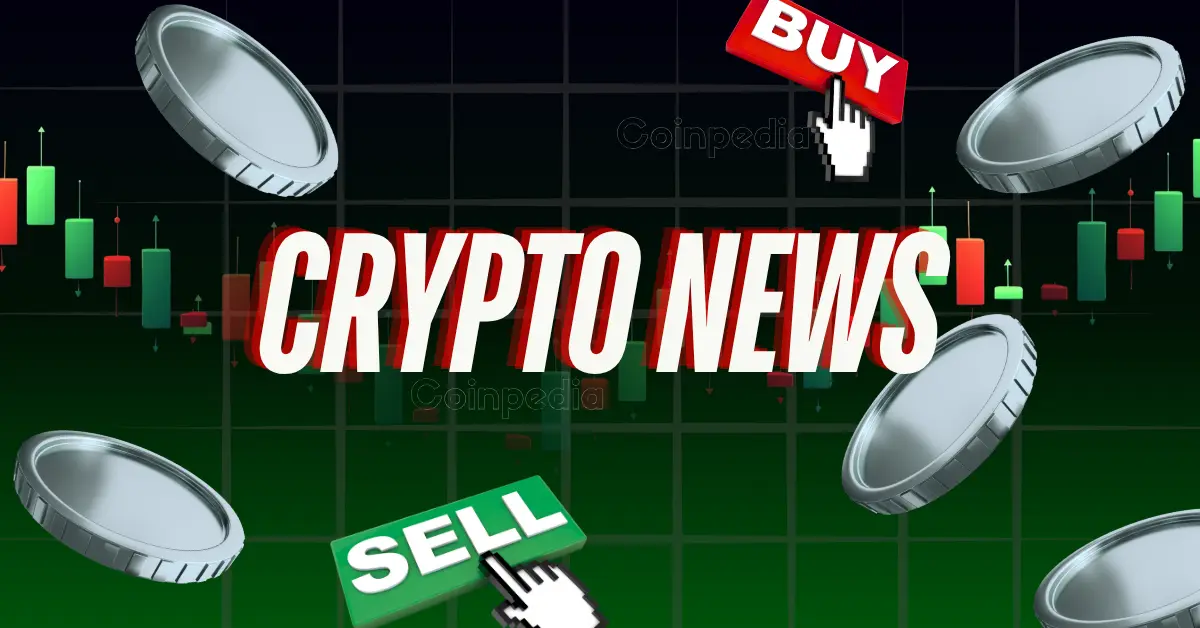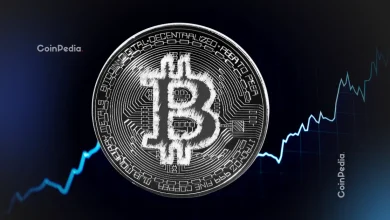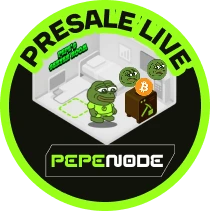
Once upon a time, crypto was called the wild west, an arid playground run by cowboys with wallets full of BTC and dreams of Lambos. Fast forward to 2025, and that rugged landscape’s been significantly tamed – but has retained its ability to consistently surprise. One of the more pleasant surprises to have surfaced in recent years has been the willingness of businesses once branded the enemy of crypto to support its infiltration into every payment systems.
Web2 giants – those familiar names powering your online life – are saddling up, bringing their muscle to the crypto corral. PayPal, Visa, Mastercard: they’re all cantering in, and it’s a genuine game-changer. Why? Because when these titans join the party, crypto stops being a fringe fantasy and starts feeling like something you’d actually use on the daily. They don’t often receive credit for their Damascene conversion, but plaudits are due for the web2 players who’ve come full circle.
Financial Players with Skin in the Game
Let’s start with the big guns. PayPal kicked things off in 2020, letting users buy, sell, and hold cryptos such as BTC and ETH. By 2024, they’d upped the ante, integrating stablecoin PYUSD and rolling it out to 430 million users worldwide. Visa’s not far behind; since 2021, they’ve settled over $2.5 billion in crypto-linked transactions. Mastercard, meanwhile, are pushing crypto debit cards and piloting blockchain payments. From a user perspective, it means that if you’re already on PayPal or swiping a Visa, crypto’s not a leap – it’s a sidestep. These giants are effectively turning “what’s a wallet?” into “oh, I already have that.”
Neo-banks, the cool kids bridging old money and new, are also doing a lot of the heavy lifting here. Take Crypto.com, over 80 million users strong and with billboards at seemingly every major sporting event. Great name, globally recognizable brand. They’ve just added PayPal as a payment method, letting you fund your crypto buys straight from your PayPal balance.
This means no interminable transfers, no extra apps: just seamless integration into a platform you already trust. It’s like adding crypto to your financial toolbox without needing a manual. Neo-banks like Crypto.com aren’t so much lowering crypto’s adoption curve as steam-rollering it till it’s pancake flat.
Don’t Forget the Partnerships Driving Adoption
Web3 projects love a good partnership announcement, and in collaborating with web2’s major players, they’ve inked deals that are more than mere vapor. PayPal and Visa teamed up last year to streamline crypto payouts – think freelancers getting paid in USDC via Visa Direct. Mastercard’s collab with wallet providers like MetaMask and Trust Wallet, meanwhile, let users top up cards with crypto in seconds.
Then there’s Mercuryo, the rising fintech star, partnering with web3 heavyweights like Polygon and now powering euro crypto cards with Mastercard. These tie-ups aren’t just headlines; they’re highways, paving the way for crypto to flow into everyday life. Whether you position it as a web2 player streamlining access to web3 or vice-versa, the upshot is that Mercuryo and other payment providers are now mainstays for much of the money that flows between the on- and off-chain worlds 24/7.
Why Now?
What’s fueling this fire in web2 giants? They’re not entering web3 out of FOMO – they’re smarter than that. Rather, their decision to support the cryptoconomy rather than sit it out on the sidelines is driven by more rational reasoning. With much of the regulatory risk and “exoticness” of crypto having been tempered, it’s a lot safer for these TradFi titans to enter the fray. And there’s money for them to make by connecting the old world with the new.
As for the competencies they bring to bear within the crypto arena, first there’s user experience: we’re talking apps so intuitive even your grandma could buy ETH. Second, there’s security: Visa’s fraud protection and PayPal’s two-factor authentication make crypto feel less like a gamble. Third, familiarity: linking crypto to Apple Pay, Google Pay, or your trusty Visa card shrinks the learning curve to a blip. That’s the vibe: safe, simple, and second nature.
Case Studies: The Proof’s in the Pudding
The partnership between Mercuryo and MetaMask is a masterstroke for simplifying crypto onboarding. Their integration lets users buy crypto with a bank card in under a minute – no wrestling with seed phrases or navigating convoluted exchange signups. By tapping into Mercuryo’s payment infrastructure, MetaMask users can fund their wallets seamlessly, whether it’s ETH for gas fees or stablecoins for DeFi.
Mercuryo’s not stopping there. Their focus on localized solutions, such as SEPA transfers in Europe or OVO in Indonesia, means users globally can jump into web3 without friction. The MetaMask hookup has evolved with features like no-KYC purchases up to €699, slashing barriers for newcomers. Users appear to be relishing the ability to top up their wallet with a tap, then spend via Mercuryo’s Mastercard-backed crypto card. It’s a full-circle play: buy crypto fast, spend it faster.
PayPal has been a crypto trailblazer since 2020, with 35 million merchants and crypto trading live since 2021. They’ve onboarded millions to crypto, leveraging a user base of 430 million. The real kicker? Their stablecoin, PYUSD, launched in 2023 with Paxos, is now a checkout option across their network. Moving beyond mere hodling, PayPal’s pushing real spending: users can settle tabs with PYUSD at merchants or send it fee-free to friends in the U.S. It’s crypto with training wheels, wrapped in a familiar interface.
The numbers back it up: PYUSD’s market cap has climbed past $700 million, fueled by integrations like Venmo and Crypto.com. PayPal’s not just playing in web3; they’re reshaping it for the mainstream. With no fees for buying, selling, or sending PYUSD within their ecosystem (network fees apply externally), PayPal’s betting on trust and scale. It’s a bold pivot from their 1998 roots, proving they can still make an impact on the evolution of digital finance.
As a final case study to indicate the role web2 giants are now playing, Visa’s launch of Visa+ is a slick move to link digital wallets for instant payments and their crypto ambitions shine through. A pilot with Coinbase in 2024 saw 10,000 users moving USDC cross-border without the usual remittance headaches. Built on blockchains like Solana, Visa+ leverages stablecoin speed (think sub-second settlement) while keeping the familiar swipe-and-go vibe. It’s a lifeline for freelancers or small businesses, cutting costs that legacy systems like SWIFT pile on.
What This Means for Traditional Users
For the average Joe, all of this is good news. Barriers are rapidly crumbling and crypto’s no longer a techie’s toy. The interfaces mimic your banking app, so the learning curve’s virtually non-existent. There’s also the deep trust that comes when Visa or PayPal’s involved – these aren’t shady startups. A 2024 Deloitte survey found 62% of U.S. adults would try crypto if offered by a known brand. That’s the web2 effect: turning skeptics into spenders, one big brand at a time.
And all of this is just the warmup. Imagine crypto woven into every transaction: paying rent with ETH via PayPal, splitting dinner with Visa+ in USDC. Web2 giants aren’t stopping at buying and selling; they’re eyeing loyalty programs and cross-border micropayments. By 2030, Statista predicts 20% of global payments could involve crypto if integration keeps accelerating.
Web2 giants are no longer the NPCs playing a bit part in crypto adoption: they’re web3’s wingmen, dragging the industry from the fringes to the forefront. PayPal, Visa, Mercuryo and their ilk are rewriting digital finance, making it less about geeky experimentation and more about everyday ease. As these titans flex their reach, crypto’s shedding its mystique for something better: everyday utility.
Trust with CoinPedia:
CoinPedia has been delivering accurate and timely cryptocurrency and blockchain updates since 2017. All content is created by our expert panel of analysts and journalists, following strict Editorial Guidelines based on E-E-A-T (Experience, Expertise, Authoritativeness, Trustworthiness). Every article is fact-checked against reputable sources to ensure accuracy, transparency, and reliability. Our review policy guarantees unbiased evaluations when recommending exchanges, platforms, or tools. We strive to provide timely updates about everything crypto & blockchain, right from startups to industry majors.
Investment Disclaimer:
All opinions and insights shared represent the author's own views on current market conditions. Please do your own research before making investment decisions. Neither the writer nor the publication assumes responsibility for your financial choices.
Sponsored and Advertisements:
Sponsored content and affiliate links may appear on our site. Advertisements are marked clearly, and our editorial content remains entirely independent from our ad partners.





![XRP News [LIVE] Update](https://image.coinpedia.org/wp-content/uploads/2025/12/01124853/How-High-or-Low-Can-XRP-Price-Go-After-Fifth-ETF-Launch-Today-390x220.webp)


